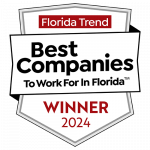Sunsetting a legacy document management system (DMS) can feel like open-heart surgery for an organization: It’s both painful and disruptive to normal operations. But just like heart surgery, there comes a time when you just can’t put it off any longer.
Poor planning before you go “under the knife” can lead to chaos, resentment, low adoption, and more work for administrators in the long run. But with the right preparation, your organization can be healthier than ever in no time at all.
In this blog post, we’ll explore the need for replacing legacy systems and then walk you through the steps you’ll need to take when undergoing this rigorous procedure.
Security and Functionality: Problems with Legacy Document Management Systems
Legacy DMSs like Filenet, Documentum, and Questys cause many problems for you and your stakeholders.
Outdated security features are likely the most significant concern. In some cases, your legacy solution may no longer even receive security updates. This leaves you highly vulnerable to cybersecurity threats that expose sensitive data and damage your organization’s reputation.
Plus, many older systems have only rudimentary forms, workflows, and automation capabilities. They also may not integrate with your other solutions. This means your employees spend more time on routine tasks than high-value work—leading to higher labor costs and lower job satisfaction. Reduced efficiency also means longer customer wait times.
In contrast to older DMSs, a modern Content Services Platform (CSP) such as Laserfiche does more than store content—it’s an integrated, secure solution that provides repositories, APIs, solutions, and business process tools to support your digital transformation. And upgraded security features mean you can rest easy knowing your data is secure.
How to Sunset Your Legacy Document Management System
Migrating to a CSP empowers you to optimize your document handling, increase productivity, protect sensitive information, and confidently make data-driven decisions.
Ensure the success of your migration with the proper planning, preparation, and support by following these steps.
Next, interview the legacy document management system’s end users. Of course, you’ll gather valuable data about the pain points and limitations of the current system. Another benefit is buy-in buy-in—putting users’ minds at ease about the migration and reassuring them that their needs and voices are being heard.
Factors you should consider include:
- Features
- Cloud options
- Ease of use
- Ease of setup
- Cost
- Integration capabilities
- Security Integration capabilities
- Scalability
- Conducting the necessary training for administrators and end-users
- Determining and configuring your document repository structure and retention schedules
- Mapping the data from the legacy system to the new system
- Configuring user permissions and access controls
- Setting up 3rd party integrations
FAQ
Factors such as outdated security features, limited functionality, and poor integration with other systems signal the need for an upgrade. Additionally, feedback from end-users about usability issues and inefficiencies can further indicate the necessity of transitioning to a modern solution.
Organizations can effectively measure the success of their migration to a new Content Services Platform (CSP) by evaluating key performance indicators (KPIs) related to productivity, security, and user satisfaction. Metrics such as reduced document retrieval times, increased workflow efficiency, and enhanced data security can indicate the positive impact of the migration. Additionally, soliciting feedback from end-users through surveys or interviews can provide valuable insights into the perceived success of the transition.
The migration process duration varies depending on the organization's size, complexity of data, and chosen CSP. Generally, migrations can take several months to a year to complete. Factors influencing the timeline include the extent of data to be migrated, customization requirements, availability of resources, and unforeseen technical challenges. Additionally, organizational readiness and stakeholder alignment can impact the speed of the migration process.
To ensure data integrity and security during the migration process, organizations should implement comprehensive measures such as encryption, data validation checks, and access controls. Prior to migration, conduct a thorough data audit to identify and prioritize sensitive information. During the migration, use secure transfer protocols and perform regular backups to mitigate the risk of data loss. Additionally, involve IT security experts to assess potential vulnerabilities and implement necessary safeguards throughout the migration journey.
You deserve a team of knowledgeable professionals to guide you through the “heart surgery” of replacing your legacy document management system.
If you’re considering moving to a modern Content Services Platform, contact us today about how we can help make the implementation as easy as possible!


